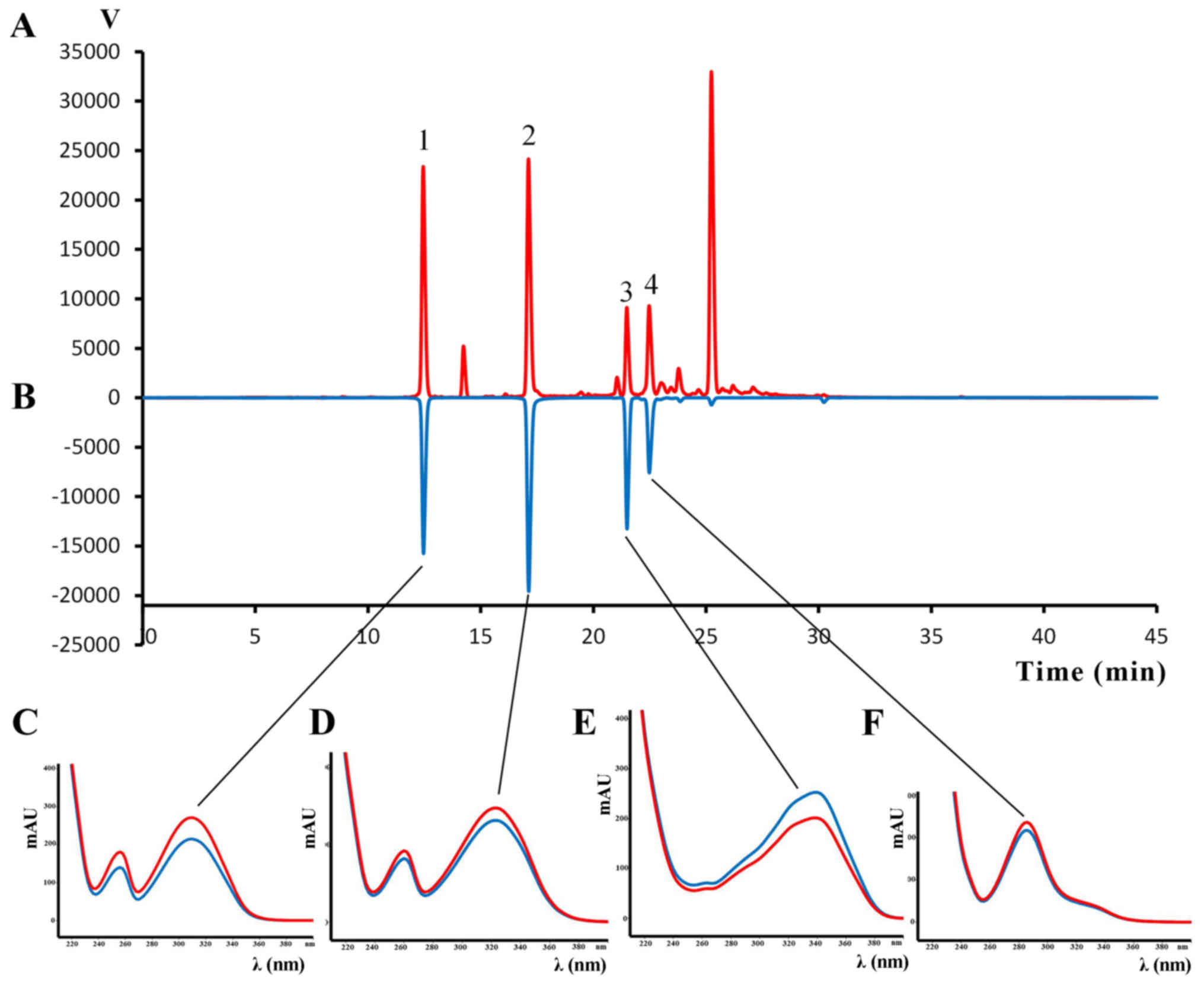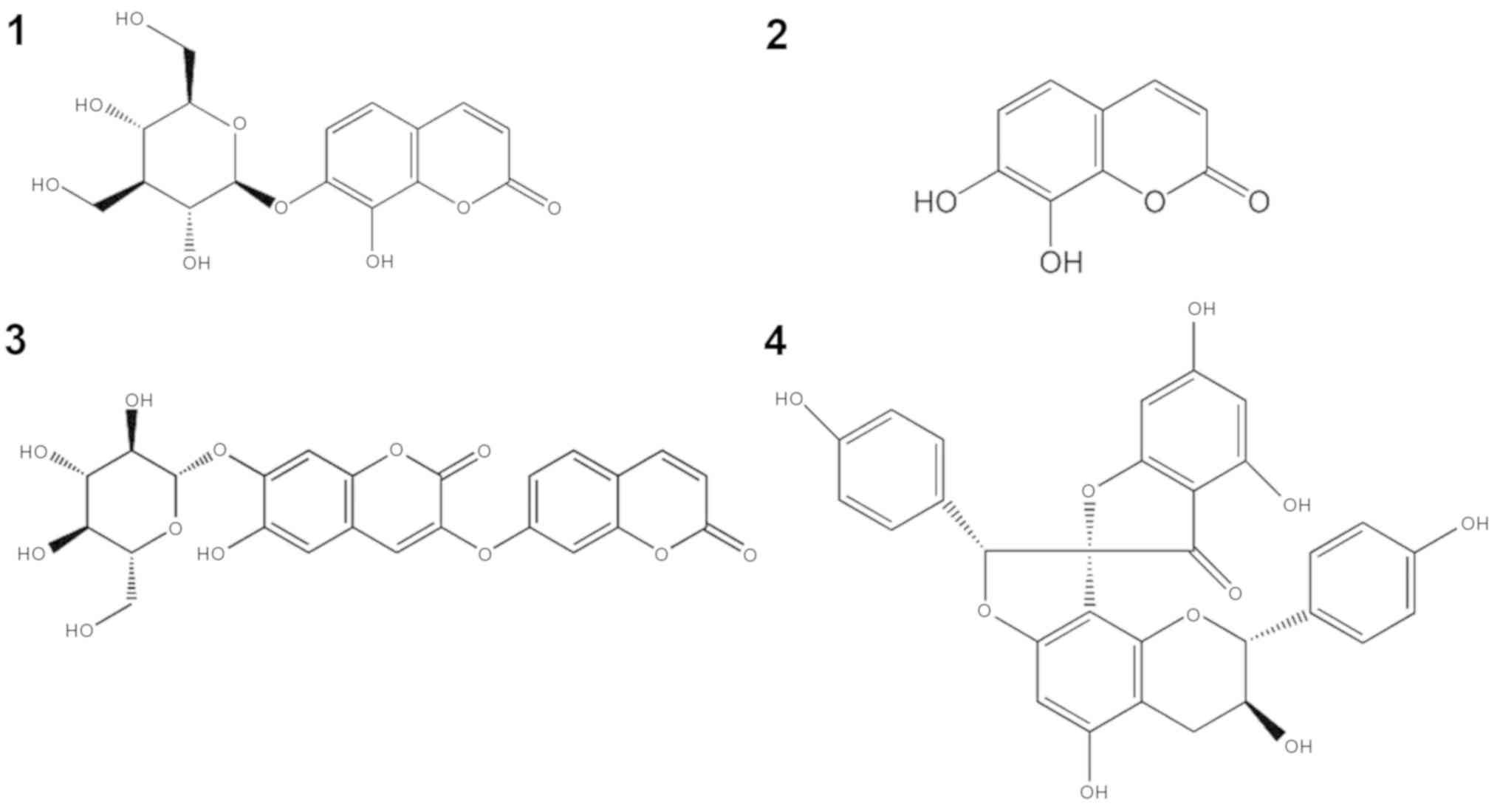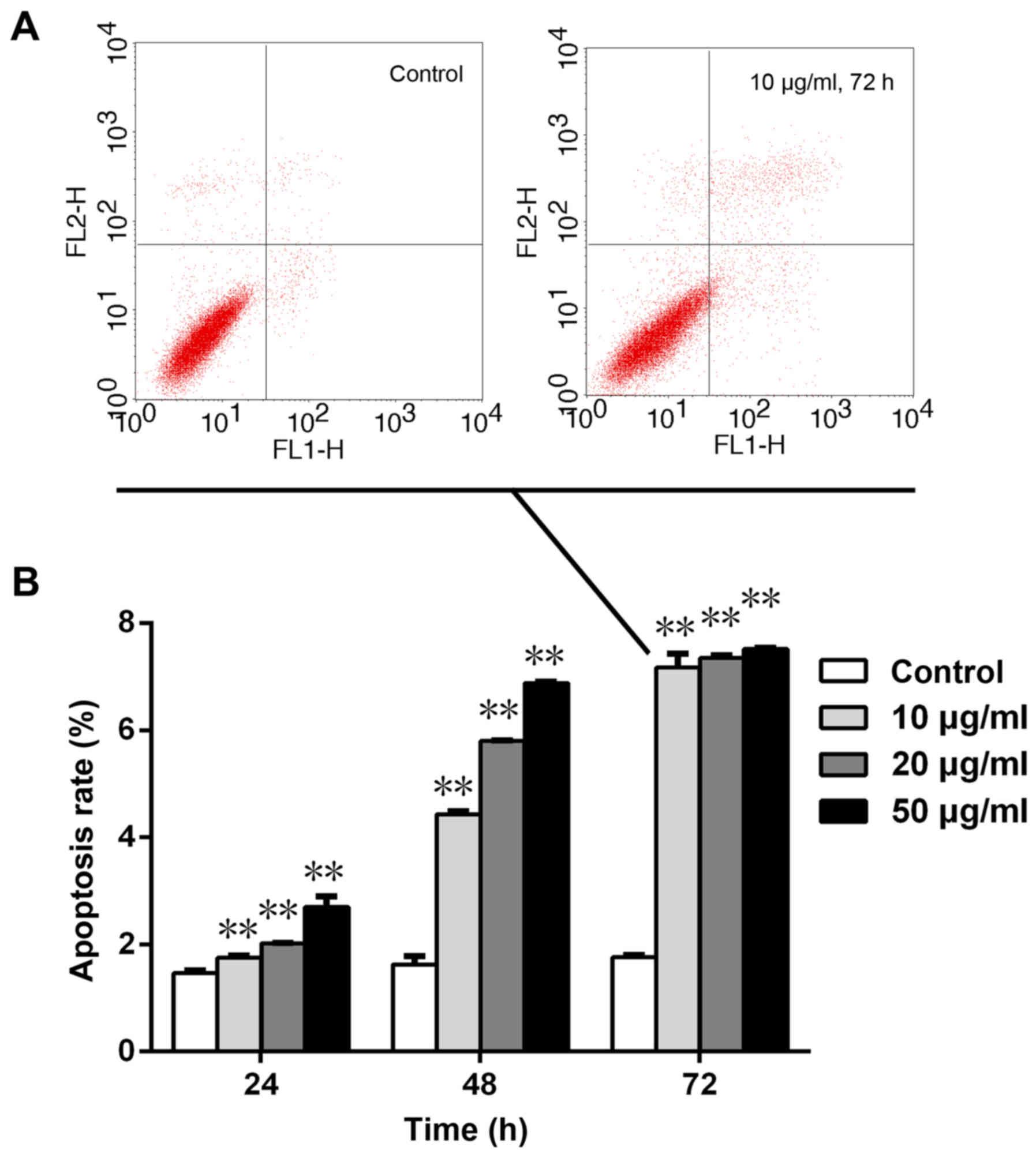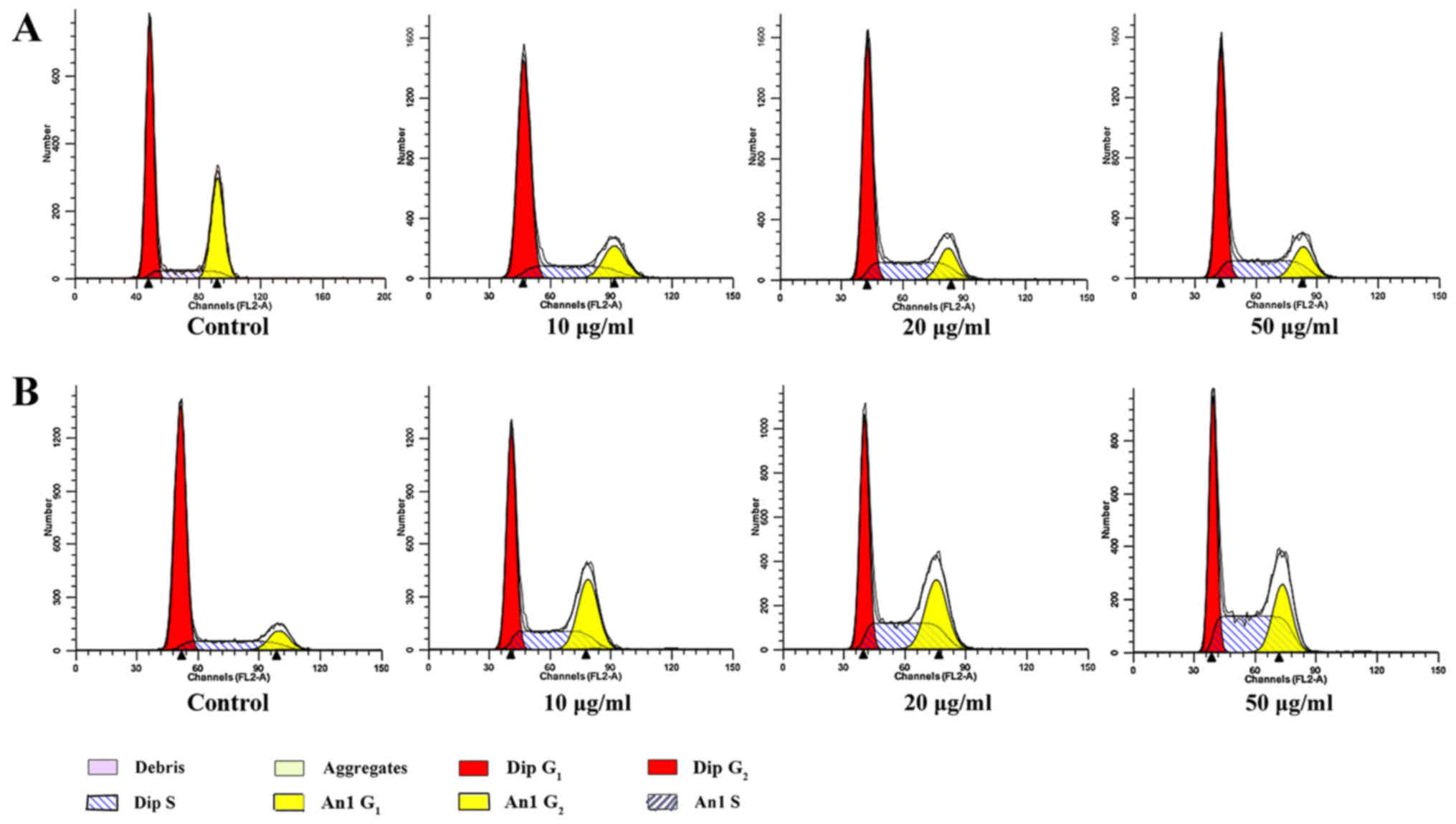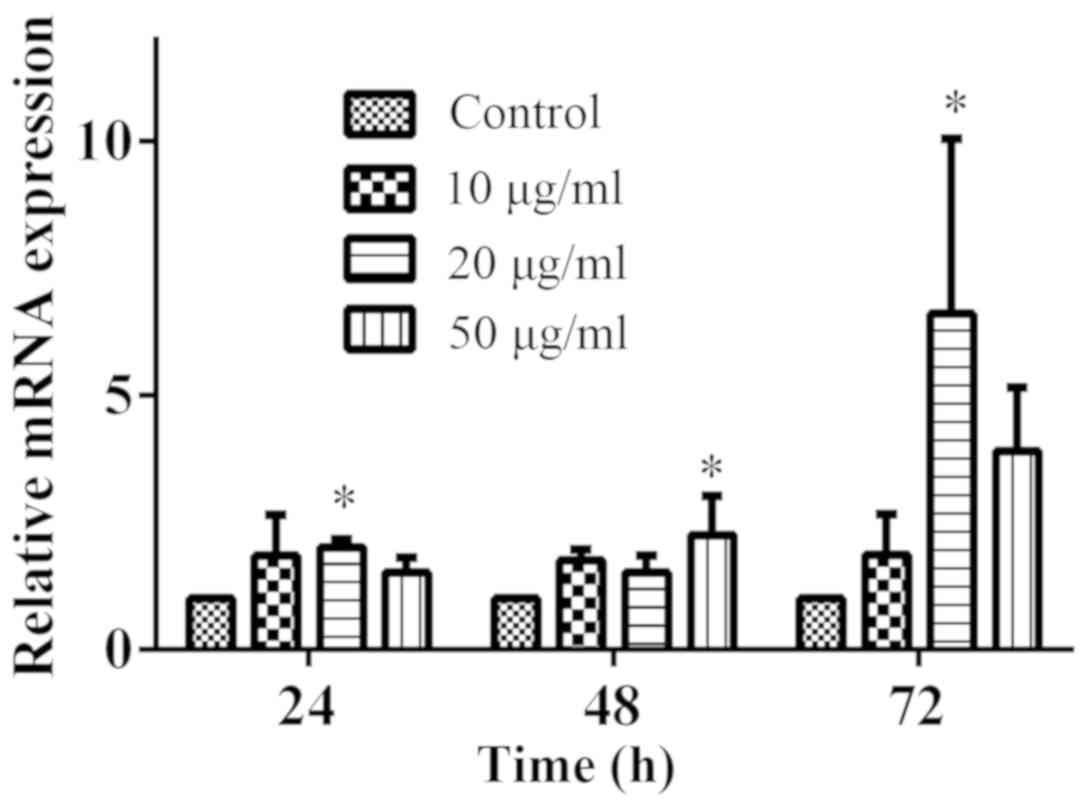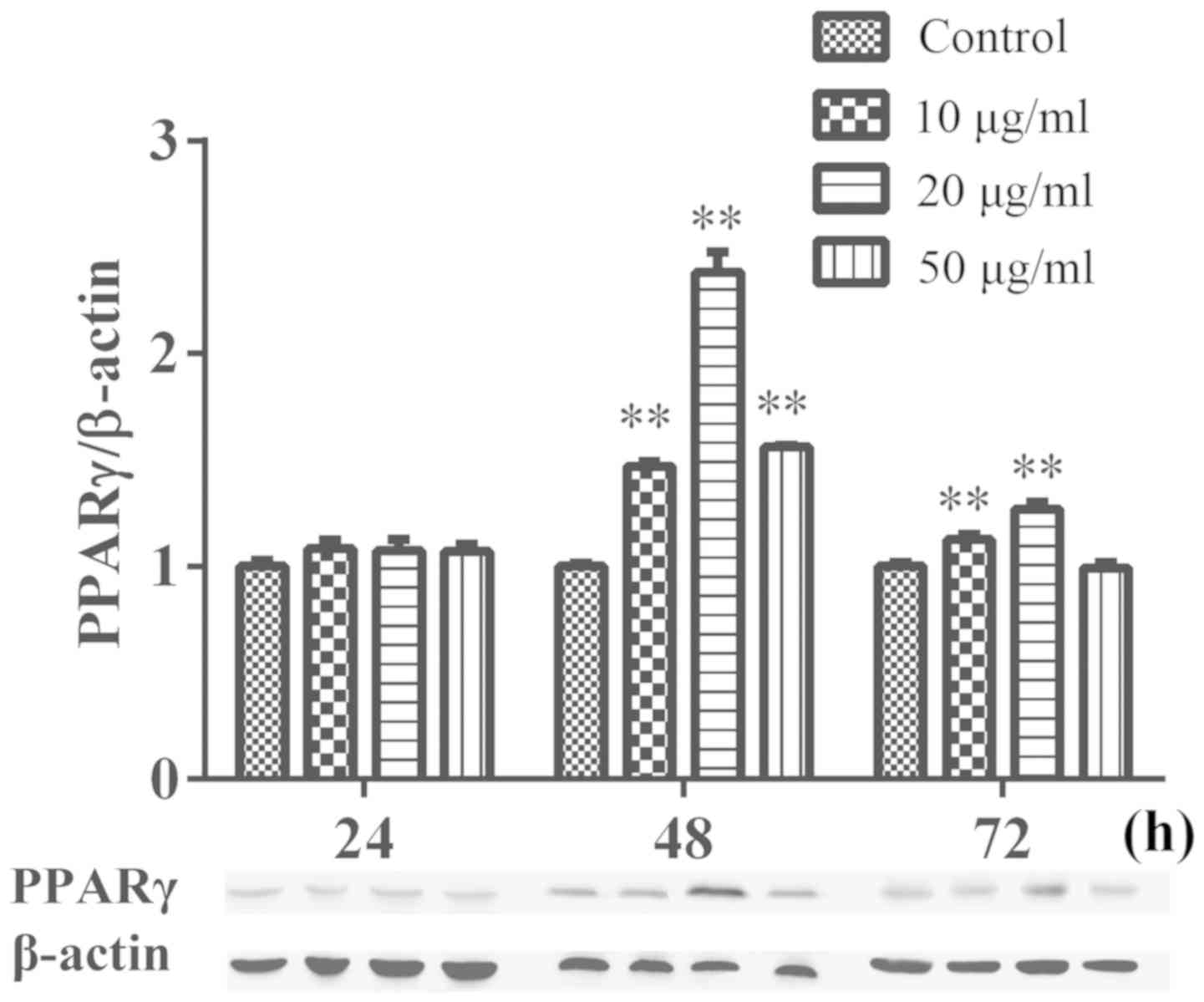|
1
|
Cragg GM and Pezzuto JM: Natural products
as a vital source for the discovery of cancer chemotherapeutic and
chemopreventive agents. Med Princ Pract. 25 (Suppl 2):41–59. 2016.
View Article : Google Scholar : PubMed/NCBI
|
|
2
|
Bishayee A and Sethi G: Bioactive natural
products in cancer prevention and therapy: Progress and promise.
Semin Cancer Biol. 40:1–3. 2016. View Article : Google Scholar : PubMed/NCBI
|
|
3
|
Kizaibek M, Daniar M, Li L and Upur H:
Antiproliferative activity of different extracts from Daphne
altaica Pall. On selected cancer cells. J Med Plants Res.
5:3448–3452. 2011.
|
|
4
|
Kizaibek M, Pferschy-Wenzig EM, Kretschmer
N, Hamburger M and Bauer R: LC-MS-based phytochemical
characterization of an antiproliferative Daphne altaica stem
bark extract. Planta Med. 81:PM–128. 2015. View Article : Google Scholar
|
|
5
|
Nugroho AE, Chin-Piow W, Hirasawa Y, Janar
J, Kaneda T, Shirota O and Morita H: Daphnane diterpenoids from
Daphne altaica. Nat Prod Commun. 11:1073–75. 2016.PubMed/NCBI
|
|
6
|
Kong TC, Xiang L, Wang X, Jun EL, Xi LF
and Schweinfurth JM: High level expression of human epithelial
β-defensins (hBD-1, 2 and 3) in papillomavirus induced lesions.
Virol J. 3:752006. View Article : Google Scholar : PubMed/NCBI
|
|
7
|
Yang X, Huang M, Zheng S, Ma X, Wan D and
Feng Y: Liquid chromatography with mass spectrometry and NMR
spectroscopy based discovery of cytotoxic principles from Daphne
tangutica Maxim. J Sep Sci. 39:21792016. View Article : Google Scholar : PubMed/NCBI
|
|
8
|
Yang MH, Avula B, Smillie T, Khan IA and
Khan SI: Screening of medicinal plants for PPARα and PPARγ
activation and evaluation of their effects on glucose uptake and
3T3-L1 adipogenesis. Planta Medica. 79:1084–1095. 2013. View Article : Google Scholar : PubMed/NCBI
|
|
9
|
Deiana M, Rosa A, Casu V, Cottiglia F,
Bonsignore L and Dessì MA: Chemical composition and antioxidant
activity of extracts from Daphne gnidium L. J Am Oil
Chemists' Society. 80:65–70. 2003. View Article : Google Scholar
|
|
10
|
Chen Y, Zhu L, Yang X, Wei C, Chen C, He Y
and Ji Z: Ailanthone induces G2/M cell cycle arrest and apoptosis
of SGC-7901 human gastric cancer cells. Mol Med Report.
16:6821–6827. 2017. View Article : Google Scholar
|
|
11
|
Shapiro GI and Harper JW: Anticancer drug
targets: Cell cycle and checkpoint control. J Clin Invest.
104:1645–1653. 1999. View
Article : Google Scholar : PubMed/NCBI
|
|
12
|
Ota K, Ito K, Suzuki T, Saito S, Tamura M,
Hayashi S, Okamura K, Sasano H and Yaegashi N: Peroxisome
proliferator-activated receptor gamma and growth inhibition by its
ligands in uterine endometrial carcinoma. Clin Cancer Res.
12:4200–4208. 2006. View Article : Google Scholar : PubMed/NCBI
|
|
13
|
Sainis I, Vareli K, Karavasilis V and
Briasoulis E: PPARgamma: The portrait of a target ally to cancer
chemopreventive agents. PPAR Res. 2008:4364892008. View Article : Google Scholar : PubMed/NCBI
|
|
14
|
Mora FD, Jones DK, Desai PV, Patny A,
Avery MA, Feller DR, Smillie T, Zhou YD and Nagle DG: Bioassay for
the identification of natural product-based activators of
peroxisome proliferator-activated receptor-gamma (PPARgamma): The
marine sponge metabolite psammaplin A activates PPARgamma and
induces apoptosis in human breast tumor cells. J Nat Prod.
69:547–552. 2006. View Article : Google Scholar : PubMed/NCBI
|
|
15
|
Edwards IJ and O'Falherty JT: Omega-3
fatty acids and PPARgamma in cancer. PPAR Res. 2008:3580522008.
View Article : Google Scholar : PubMed/NCBI
|
|
16
|
Josep BR, Kathryn R, Susan MC, Yongzhi C,
Lothar H, Frank G, Jurg R, Alejandro UB and Raquel H: Activation of
PPAR gamma and delta by conjugated linoleic acid mediates
protection from experimental inflammatory bowel disease.
Gastroenterology. 127:777–791. 2004. View Article : Google Scholar : PubMed/NCBI
|
|
17
|
Ullah N, Ahmed Z, Ahmed S, Muhammad P and
Malik A: A pentacyclic triterpene from Daphne oleoides.
Phytochemistry. 50:839–841. 1999. View Article : Google Scholar
|
|
18
|
Xu WC, Shen JG and Jiang JQ: Phytochemical
and biological studies of the plants from the genus Daphne.
Chem Biodivers. 42:1215–1233. 2011. View Article : Google Scholar
|
|
19
|
Pang NN, Yong YU, Bi KS, Yan BQ and Chen
XH: Simultaneous determination of the contents of palmitic acid and
linoleic acid in Genkwa Flos by GC. J Shenyang Pharmaceutical
University. 28:47–50. 2011.(In Chinese).
|
|
20
|
Riaz M, Saleem A, Siddique S, Khan BA,
Nurealam M, Shahzadulhussan S, Miana GA and Khan MQ: Phytochemistry
of Daphne oleoides. Nat Prod Res. 30:880–897. 2016.
View Article : Google Scholar : PubMed/NCBI
|
|
21
|
Cabrera E, Garcia-Granados A and Maqueda
M: Antibacterial activity of coumarins isolated from Daphne
gnidium L. Microbios Letters. 37:153–159. 1988.
|
|
22
|
Pan L, Zhang XF, Deng Y, Zhou Y, Wang H
and Ding LS: Chemical constituents investigation of Daphne
tangutica. Fitoterapia. 81:38–41. 2010. View Article : Google Scholar : PubMed/NCBI
|
|
23
|
Ulubelen A, Tan N and Tuzlaci E:
Constituents of Daphne mucronata. Fitoterapia.
61:2811990.
|
|
24
|
Park BY, Min BS, Oh SR, Kim JH, Bae KH and
Lee HK: Isolation of flavonoids, a biscoumarin and an amide from
the flower buds of Daphne genkwa and the evaluation of their
anti-complement activity. Phytother Res. 20:610–613. 2006.
View Article : Google Scholar : PubMed/NCBI
|
|
25
|
Baba K, Takeuchi K, Doi M, Inoue M and
Kozawa M: Chemical studies on the constituents of the
thymelaeaceous plants. II. Stereochemistry of daphnodorin A and
daphnodorin B. Chem Pharm Bull. 34:1540–1545. 1986. View Article : Google Scholar
|
|
26
|
Yuan XH, Xu CX, Zhou M, Zhang XY and Li
BG: Chemical constituents of Daphne tangutica. Tianran
Chanwu Yanjiu Yu Kaifa. 19:55–58. 2007.
|
|
27
|
Zhang W, Zhang WD, Liu RH, Shen YH, Zhang
C, Cheng HS, Fu P and Shan L: Two new chemical constituents from
Daphne odora Thunb. var. marginata. Nat Prod Res.
20:1290–1294. 2006. View Article : Google Scholar : PubMed/NCBI
|
|
28
|
Ullah N, Ahmad S and Malik A:
Phenylpropanoid glycosides from Daphne oleoides. Chem Pharm
Bull. 47:114–115. 1999. View Article : Google Scholar
|
|
29
|
Boik JC, Kirakosyan A, Kaufman PB, Seymour
EM and Spelman K: Interactions of bioactive plant metabolites:
Synergism, antagonism, and additivity. In: Recent advances in plant
biotechnology. Springer US. (Boston, MA). 213–230. 2009.
|















